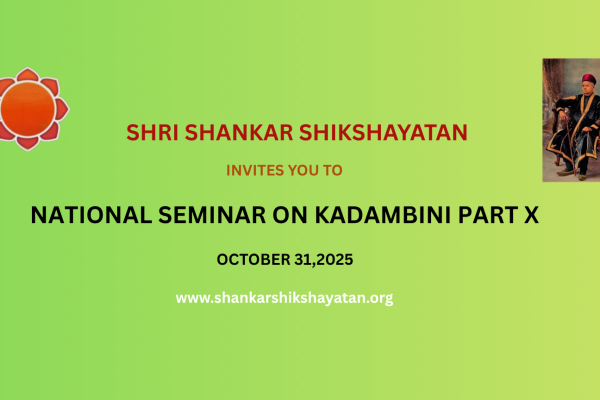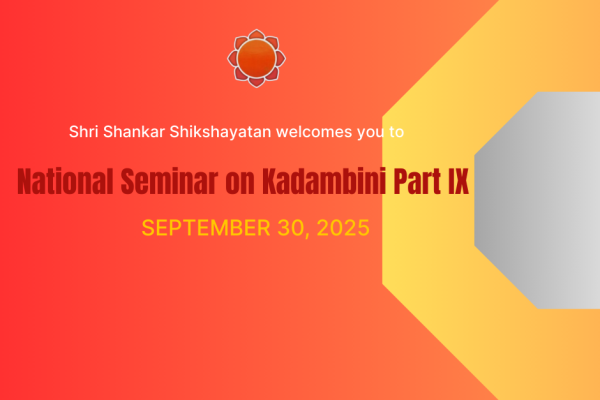A National Symposium organised by Shri Shankar Shikshayatan Vedic Research Institute was held online on Thursday, July 31, 2025, from 5:00 to 7:00 PM. The symposium was based on various topics from Kadambini, a text composed by Pandit Madhusudan Ojha, specifically from its section dealing with celestial phenomena. Dr. Yagyadatt, Assistant Professor, Department of Astrology, Central Sanskrit University, Ved Vyasa Campus, said in his address that five types of fire originate in the sky. Their names are — Vajra, Vidyut, Maholka, Dhishnya, and Tara. In meteorology, all five are referred to as Ulkas (meteors). Dr. Suresh Sharma, Assistant Professor, Department of Astrology, Central Sanskrit University, Shri Raghunath Kirti Campus, delivered his lecture on the Prakīrṇa Adhyāya (Miscellaneous Chapter) of Kadambini. He explained that the content of this chapter is divided into six topics: Rahu, Ketu, Tara, Digdaha (scorching of directions), Dust Rain (Pāṃsu), and Earthquake. The first topic of this chapter is Rahu. Rahu has neither its own light nor reflects another’s light. It does not shine. Even though it exists and moves in the sky, its movement leaves no visible trace. Dr. Ganesh Krishna Bhatt, Assistant Professor, Department of Astrology, Central Sanskrit University, Guruvayur Campus, said that Rahu is also called Svarbhanu. If an eclipse occurs in the month of Mārgaśīrṣa, there will be no rain in the regions called Puṇḍraka, Kashmir, Kaushal, and the western part of India, but the rest of the country will have rain, prosperity, and abundance. If an eclipse occurs in Pausha month, it will harm the regions called Sindhu, Videha, and Kukur, and the rest of the country will suffer from low rainfall and famine. Dr. Ratish Kumar Jha, Assistant Professor, Department of Astrology, Dr. Jagannath Mishra Sanskrit College, Madhubani, Bihar, said that the dark, lightless half of celestial bodies such as the Earth, Moon, and Mercury is called Svarbhanu. The triangular shadow arising from this dark part is called Svarbhanu Rahu. Since the sun remains in their “Svar” (region), they are called Svarbhanu. Prof. Santosh Kumar Shukla, Professor, School of Sanskrit and Indic Studies, Jawaharlal Nehru University, New Delhi, said that today’s topic is highly practical and can only be understood through observation. Pandit Ojha has mentioned many synonyms for Vajra. Analyzing these names is important because their meanings reveal the basis of their naming. The synonyms include: Hrādini, Vajra, Āpotra, Bhidira, Bhidura, Bhidu, Jambhāri, Jāmbavi, Dambha, Dambholi, Aśani, Pavi, Shatadhara, Shatara, Gau, Meghabhūti, Girijvara, Shatakoṭi, Svaru, Shamba, Kuliśa, Girikantaka. Dr. Ashish Mishra, Guest Lecturer, Department of Vedas, Central Sanskrit University, Eklavya Campus, Tripura, recited the Vedic invocation with intonation. The program was conducted by Dr. Lakshmi Kant Vimal, Research Officer, Shri Shankar Shikshayatan Vedic Research Institute. The symposium was attended by professors, research scholars, and Sanskrit enthusiasts from universities and colleges across various states.




